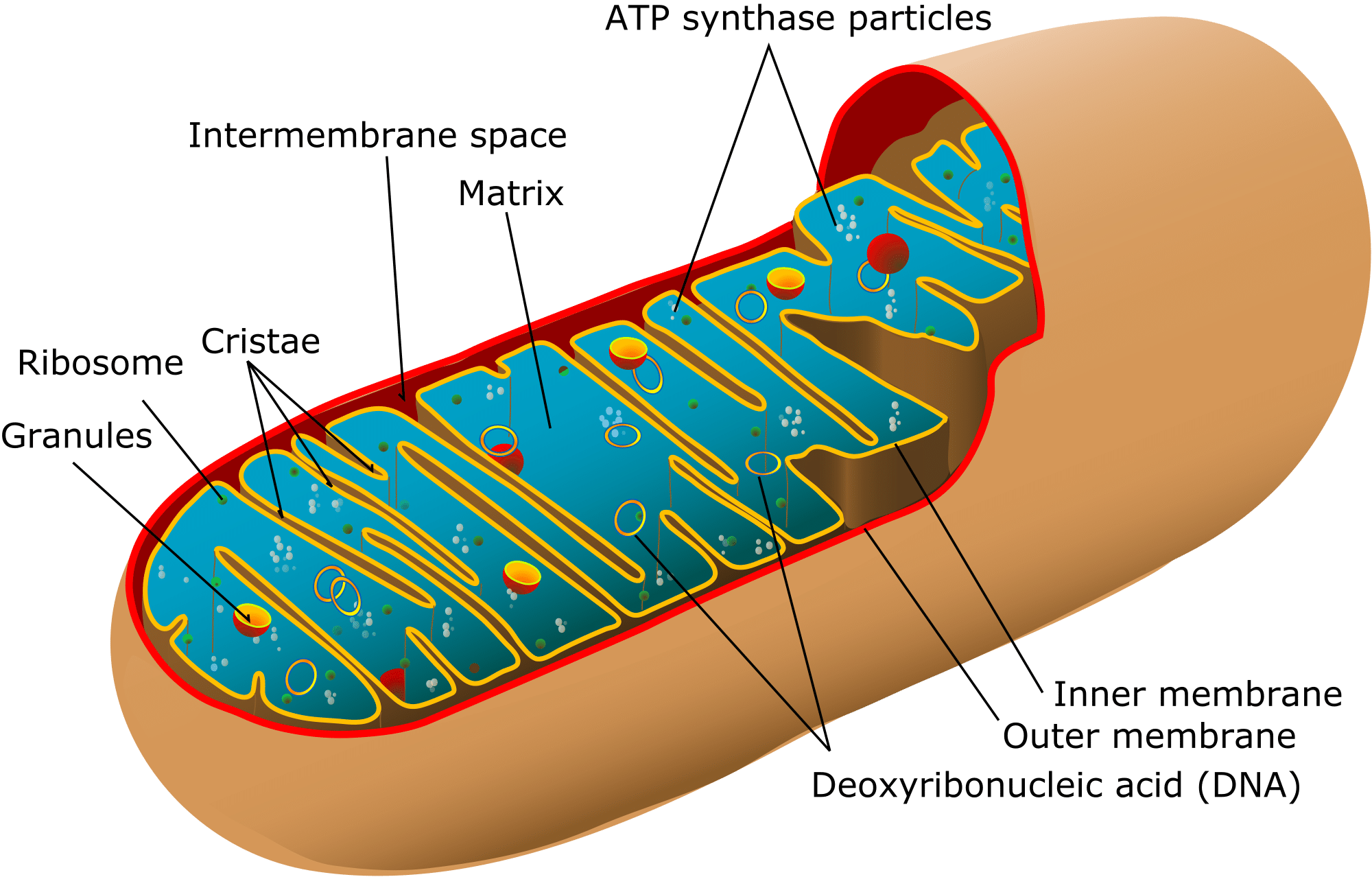Describe the Structure of the Mitochondria
Structure of Mitochondria. Chemical energy produced by the mitochondria is stored in a small molecule called adenosine triphosphate ATP.

Describe The Structure Of Mitochondria With The Help Of A Diagram
Mitochondria are the main site of ATP synthesis in aerobic cells using the free energy of the oxidation of metabolic fuels by oxygen.

. They are rod-shaped structures that are enclosed within two membranes the outer membrane and the inner membrane. Mitochondria are present in both plant and animal cells. The fluid contained in the mitochondria is called the matrix.
The outer membrane covers the organelle. Their size varies between 1 and 10 micrometers in length. A MORPHOLOGY AND ORGANELLE INTERACTIONS The classic picture of cellular mitochondria based on low-resolution electron micrographs is of a set of relatively small bean shaped particles scattered around the cytosol.
Both are phospholipid bilayers like the membrane around the cell. Through a series of chemical reactions mitochondria break. Inner membrane has layered structures called cristae.
The outer membrane contains proteins known as porins which allow movement of ions into and out of the mitochondrion. The different parts of mitochondria in animal cells are. Mitochondria have an inner and outer membrane with an intermembrane space between them.
Structure of Mitochondria Mitochondria are composed of two membranes. Mitochondria are mobile plastic organelles that have a double-membrane structure. Mitochondria are membrane-bound cell organelles mitochondrion singular that generate most of the chemical energy needed to power the cells biochemical reactions.
Mitochondria are small membrane-bound organelles that are usually about 1 10 microns in length. For example in flagellated protozoa or in mammalian sperm mitochondria are concentrated. The outer membrane covers the organelle and contains it like a skin.
The mitochondria structure is a double-membrane that consists of an outer membrane and an inner membrane called a cristae that extends into the inner matrix 1. Mitochondria has two membranes one is an internal membrane and the other is an outer membrane. Mitochondria have two membranes an outer membrane and an inner membrane.
They are especially abundant in cells and parts of cells that are associated with active processes. Mitochondria in animals are round or oval and are bound by a double membrane. Mitochondria contain their own small chromosomes.
It is involved in different cellular activities like respiration differentiation cell signalling cell senescence controlling the cell cycle cell growth and other metabolic activities of the cell. Mitochondria are typically round to oval in shape and range in size from 05 to 10 μm. These membranes are made of phospholipid layers.
These membranes are made of phospholipid layers just like the cells outer membrane. It has four distinct domains. The structure is very simple with four different compartments.
The inner membrane folds over many times and creates layered structures called cristae. Why is the inner mitochondrial membrane folded. Outer Membrane-The outer membrane keeps the inner organelles intact and in place.
Mitochondria are known as the powerhouses of the cell. It is made up of protein and phospholipid bilayer. Mitochondria have no constant shape and size but the overall structure remains same which is rod-shaped.
Mitochondria are pleomorphic organelles with structural variations depending on cell type cell-cycle stage and intracellular metabolic state. Enzymes involved in the elongation of fatty acids and the oxidation of adrenaline can also be found on the outer. The mitochondrion is enclosed by two membranes that separate it from the cytosol and the rest of the cell components.
Name other organelles beside the mitochondria that contain DNA and have a double membrane. They can be spherical or rod-shaped. The outer membrane covers the surface of the mitochondrion.
They are rod-shaped a double membraned organelle found both in the plant as well as animal cells. The outer membrane covers the surface of the mitochondrion while the inner membrane is located within and has many folds called cristae. In addition to producing energy mitochondria store calcium for cell signaling activities generate heat and mediate cell growth and death.
The cytoplasm of nearly all eukaryotic cells contain mitochondria although there is at least one exception the protist Chaos Pelomyxa carolinensis. The key function of mitochondria is energy production through. They are made of two membranes.
The membranes are made up of phospholipids and proteins. The outer membrane is a selectively permeable membrane that. It ranges from 05 to 10 micrometer in diameter.
The structure of the mitochondria include the inner mitochondrial membrane the outer mitochondrial membrane the intermembrane space. These membranes are composed of phospholipid bilayers and proteins. They have a matrix space containing the enzymes of the citrate cycle and beta-oxidation enclosed by an inner membrane containing the 4 complexes of the electron transport chain ATP synthase and specific carriers for metabolites.
However our understanding of the morphology of the organelle has changed with the advent of. PART 1 THE STRUCTURE OF MITOCHONDRIA. Their number in each cell varies according to the metabolic activity of each specific cell.
We also analyzed the effect of cadmium on mitochondria in both somatic and germ line cells 32. The outer membrane the inner membrane the intermembrane space and the matrix. As mentioned previously it is necessary to analyze how.
Describe the outer membrane of the mitochondria.

Mitochondria Structure Function Teachmephysiology

Describe The Structure Of Mitochondria With The Help Of A Diagram Cbse Class 10 Science Learn Cbse Forum

Describe The Structure Of Mitochondria With The Help Of A Diagram Brainly In
No comments for "Describe the Structure of the Mitochondria"
Post a Comment